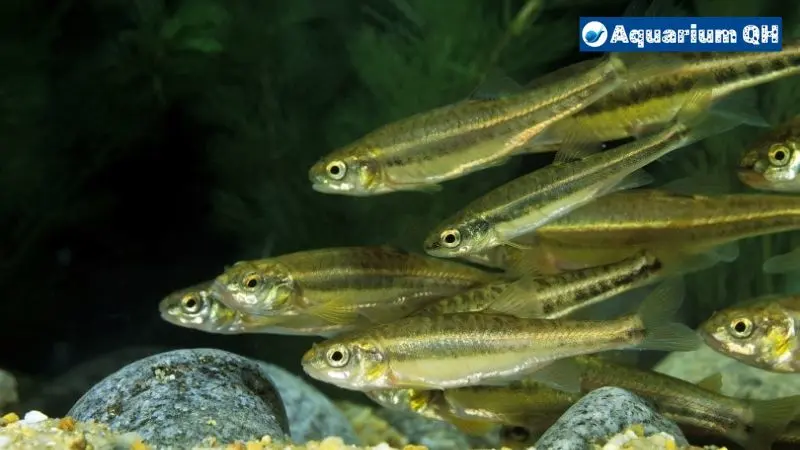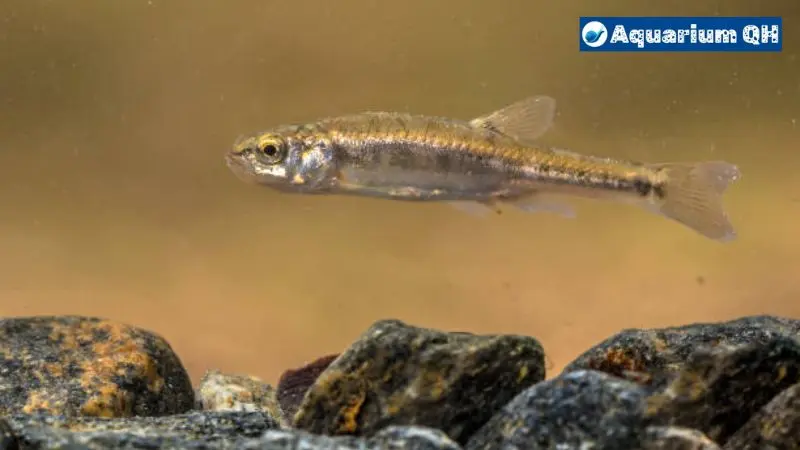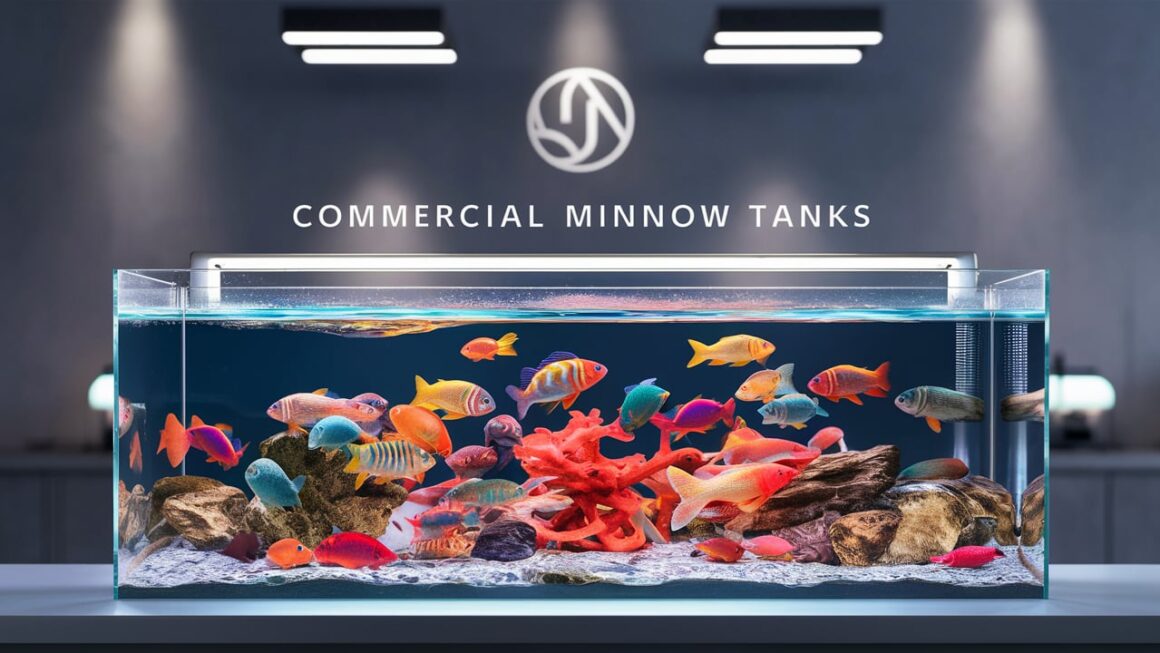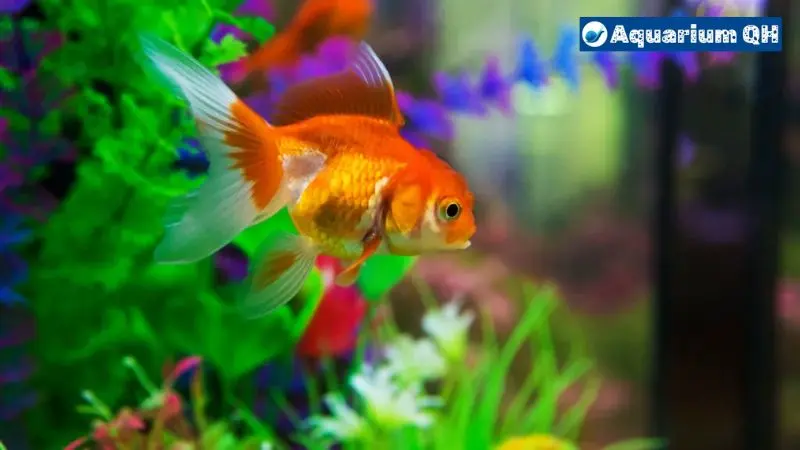Keeping minnows in an aquarium can be an incredibly rewarding experience. These small, lively fish bring life and energy to any tank, making them a popular choice among aquarists. But one common question that arises when setting up a minnow tank is, “How many minnows can I safely keep per gallon?“
Let’s dive into this topic and explore the factors that influence the stocking density of minnows in your aquarium with Aquarium QH.
Introduction to Keeping Minnows

What are Minnows?
Before we delve into the specifics of stocking density, let’s take a moment to understand what minnows are. Minnows are a diverse group of small freshwater fish belonging to the Cyprinidae family. They come in various species, each with its own unique characteristics and behaviors.
Why Keep Minnows?
Minnows are popular among fish enthusiasts for several reasons. They are hardy, easy to care for, and come in a variety of colors and patterns, making them visually appealing additions to any tank. Additionally, they play a crucial role in maintaining the ecosystem of the aquarium by consuming algae and leftover food, contributing to overall cleanliness.
Factors Influencing Minnow Stocking Density

Size of the Tank
The size of your tank is perhaps the most critical factor to consider when determining the appropriate stocking density for minnows. In smaller tanks, overcrowding can lead to stress, competition for resources, and poor water quality. Larger tanks provide more space for fish to swim and explore, allowing for higher stocking densities.
Species of Minnows
Different species of minnows have varying space requirements and social behaviors. Some species are more territorial and aggressive, requiring more space per fish to thrive. It’s essential to research the specific needs of the minnow species you plan to keep and adjust stocking density accordingly.
Environmental Conditions
Water quality parameters such as temperature, pH, and oxygen levels also play a significant role in determining stocking density. Minnows are sensitive to changes in water chemistry, so it’s crucial to maintain stable conditions within the aquarium to prevent stress and health issues.
Calculating Minnows per Gallon

Basic Rule of Thumb
A common rule of thumb for stocking density is to allow one inch of fish per gallon of water. However, this guideline may not always be applicable, especially for active and schooling fish like minnows.
Adjustments Based on Tank Size
In larger tanks, you can safely keep more minnows per gallon compared to smaller tanks. As a general rule, aim for a minimum of 10 gallons per adult minnow to ensure ample space for swimming and natural behaviors.
Considering Fish Behavior
Observing the behavior of your minnows can provide valuable insights into whether they are comfortable with the current stocking density. Signs of stress, such as hiding, aggression, or erratic swimming patterns, may indicate that the tank is overcrowded and needs adjustment.
The Importance of Proper Stocking Density
Impact on Water Quality
Overcrowding can lead to a build-up of waste and uneaten food, compromising water quality and creating a stressful environment for minnows. Maintaining proper stocking density is essential for promoting good water quality and minimizing the risk of disease outbreaks.
Minnow Health and Growth
When minnows are overcrowded, they may experience stunted growth, increased susceptibility to diseases, and behavioral problems. By providing adequate space and reducing stocking density, you can promote healthier, more vibrant minnows that thrive in their environment.
Tips for Maintaining Ideal Stocking Density
Regular Water Quality Checks
Frequent monitoring of water parameters such as ammonia, nitrite, and nitrate levels is crucial for ensuring optimal conditions for minnows. Performing regular water changes and filtration maintenance can help prevent overcrowding-related issues.
Monitoring Fish Behavior
Pay close attention to the behavior of your minnows, as it can indicate whether they are comfortable with the current stocking density. Make adjustments as needed to alleviate stress and promote natural behaviors.
Adjusting Stocking Density as Needed
As your minnows grow and mature, their space requirements may change. Be prepared to adjust stocking density accordingly by either rehoming excess fish or upgrading to a larger tank to accommodate their needs.
Conclusion
In conclusion, determining the appropriate stocking density of minnows per gallon requires careful consideration of various factors, including tank size, species, and environmental conditions. By following the guidelines outlined above and prioritizing the well-being of your minnows, you can create a thriving aquarium environment where these fascinating fish can flourish.
FAQs
- How many minnows can I keep in a 10-gallon tank?
- It’s best to limit the number of minnows in a 10-gallon tank to a small group of individuals to prevent overcrowding and ensure adequate space for swimming.
- Can I mix different species of minnows in the same tank?
- While it’s possible to keep multiple species of minnows together, it’s essential to research their compatibility and space requirements to prevent aggression and territorial disputes.
- Do minnows require special water conditions?
- Minnows prefer clean, well-oxygenated water with stable temperature and pH levels. Regular water quality checks and maintenance are essential for their health and well-being.
- How often should I feed my minnows?
- Minnows are omnivorous and should be fed a varied diet consisting of high-quality flakes, pellets, and live or frozen foods. Feed them small amounts 2-3 times a day, ensuring they consume all the food within a few minutes.
- What tank mates are compatible with minnows?
- Peaceful, community-oriented fish such as tetras, danios, and guppies make excellent tank mates for minnows. Avoid aggressive or predatory species that may harass or prey on the minnows.




